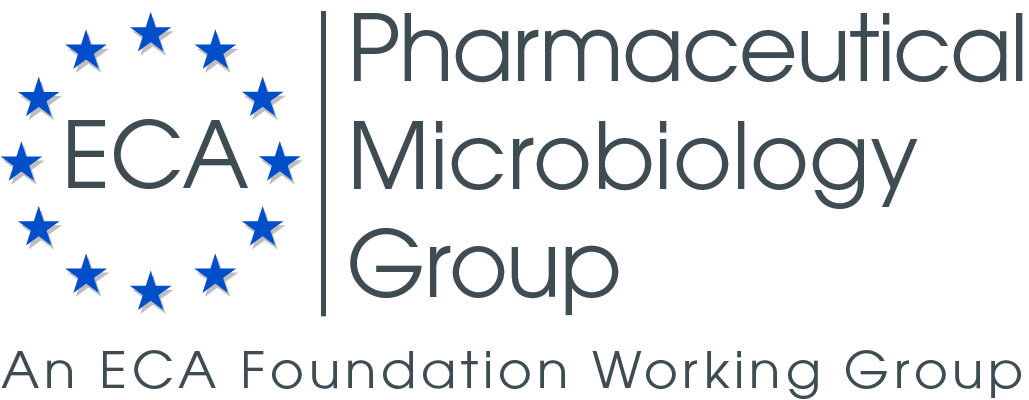|
|
|
 |
03. Disinfection
|
|
|
|
-
Assessment of the disinfection of impaction air sampler heads using 70% IPA, as part of cleanroom environmental monitoring - more
-
Examination of the order of incubation for the recovery of bacteria and fungi from pharmaceutical-grade cleanrooms. - more
-
Evaluating Disinfectant Efficacy of a Silver-Based Disinfectant - more
-
In vitro fungicidal activity of biocides against pharmaceutical environmental fungal isolates. - more
-
UNDERSTANDING ALCOHOLS AS ANTIMICROBIAL AGENTS - more
-
In vitro Antifungal Efficacy of Biguanides and Quaternary Ammonium Compounds against Cleanroom Fungal Isolates - more
-
! NEW ! Plasma Decontamination: A Case Study on Kill Efficacy of Geobacillus stearothermophilus Spores on Different Carrier Materials - more
-
! NEW ! Simplifying the WHO "how to hand rub" technique: three steps are as effective as sixdresults from an experimental randomized crossover trial - more
-
! NEW ! Disinfectant Effectiveness Testing Challenges - more
-
! NEW ! Silver Ions Vs Silver Nanoparticles as Antibacterial Factor - more
Tim Sandle and Ravikrishna Satyada
http://www.academia.edu/18766728/...
Active (volumetric) air-sampling is an important component of the environmental monitoring of cleanrooms. It is important that the results of such monitoring are accurate. One aspect of ensuring that the result is "valid"
is through minimising cross-contamination. The "at risk" part of the sampler is the head. There are three alternatives to control cross-contamination during active air sampling contamination control: using multiple air samplers, autoclaving the sampler head in-between samples, or disinfecting the sampler head intermittently. This paper summarises a study where a disinfectant (70% isopropyl alcohol) was used to disinfect the head of an impaction air sampler between sampling sessions (spray-and-wipe technique). The study examined two factors: disinfectant decontamination effectiveness and the potential for the inhibition of microbial growth. With decontamination effectiveness, successive operations of an air sampler were examined within different cleanroom grades; with microbial growth inhibition studies, different disinfection time points were assessed. The paper concludes that this method of contamination control is effective and applicable to most cleanroom monitoring situations: it is unlikely to allow carry-over of microbial contamination and it is not shown to cause inhibition of microbial growth.
|
|
|
Sandle T.
http://www.ncbi.nlm.nih.gov/pubmed/25306772
Abstract
A study was undertaken to compare microbial recoveries from pharmaceutical-grade cleanrooms using two different incubation regimes and a general-purpose agar (Tryptone Soy Agar). One temperature regime (A) incubated plates first at 30 degrees C to 35 degrees C, followed by 20 degrees C to 25 degrees C; the second temperature regime (B) began the incubation with plates at 20 degrees C to 25 degrees C, followed by 30 degrees C to 35 degrees C. The experimental outcomes demonstrated that there was no significant difference with the total microbial count when measured using a t-test (0.05 significance level; 95% confidence interval). However, with the recovery of fungi, the second incubation regime (B), which began with the lower 20 degrees C to 25 degrees C temperature, produced higher incidents and numbers of fungi. While this finding might provide the basis for adopting one incubation regime over another, a review of the types of cleanrooms recovering fungi suggests that fungal incidents are low, and they are more often confined to specific areas. Thus, as an alternative, incubation regimes could be varied to suit different cleanroom environments or a selective mycological agar adopted for specific areas.
|
|
|
John M. Lindsay
http://www.pharmtech.com/evaluating-disinfectant-efficacy-silver-based-disinfectant
Abstract
A disinfectant composed of a low-concentration suspension of silver ions is a quick-acting sporicidal disinfectant that is non-corrosive, is skin-safe (non-toxic), and is not a respiratory irritant. The disinfectant was evaluated at the Aseptic Training Institute (ATI) at the Johnston Community College Work Force Development Center in Clayton, NC. Six microbial preparations were used as challenge organisms for the disinfectant on four different surface materials. In addition, the effectiveness of the disinfectant was evaluated in situ by collecting environmental samples after intentionally contaminating and cleaning a facility and equipment. The author reports the results of these evaluations and concludes that the disinfectant is completely sporicidal with only a one-minute contact time.
|
|
|
Sandle T, Vijayakumar R, Saleh Al Aboody M, Saravanakumar S
http://www.ncbi.nlm.nih.gov/pubmed/25155804
AIMS:
To determine the minimum inhibitory concentrations (MIC) of a range of cleanroom fungi against three disinfectants common to the pharmaceutical and healthcare sectors: biguanide (chlorhexidine) and two quaternary ammonium compounds (benzalkonium chloride and cetrimide).
METHODS AND RESULTS:
The in vitro fungicidal activities of the three biocides were studied against 112 cleanroom fungal isolates using broth microdilution technique (CLSI M38-A2 standard).
CONCLUSIONS:
Minimum inhibitory concentration (MIC) for all three biocides against hyaline fungi showed results of not more than 16 μg ml(-1). Alternaria showed <32 μg ml(-1) and other dematiaceous fungi reported that 8-16 μg ml(-1) for biguanides and QACs. This study clearly demonstrates that the most frequently isolated micro-organisms from an environmental monitoring programme may be periodically subjected to broth microdilution testing with cleanroom disinfectant agents used in the disinfection programme confirm their sensitivity profile.
SIGNIFICANCE AND IMPACT OF THE STUDY:
No large collection of data exists on the activity of biocides on pharmaceutical cleanroom fungal isolates. This is the first study report with large collection of cleanroom fungal isolates tested against common biocides using the broth microdilution antifungal susceptibility testing to determine the MIC value. The data presented support a quality control procedure for cleanroom disinfection.
|
|
|
STERIS
www.steris.com
Alcohols have been studied for and used for their antimicrobial activity for more than 100 years. Although it has been observed that the antimicrobial activity of aliphatic alcohols increases with molecular weight, only ethanol and isopropanol have found routine use in the health care and industrial communities. This is due to a number of factors, including:
- low toxicity
- ready availability
- good miscibility with water
Over the years, both ethanol and isopropanol have been widely employed for skin sanitizing, medical device disinfection, and hard surface decontamination. The use of alcohols for decontamination of cleanrooms and other pharmaceutical processing areas is very common. By some estimates, up to 90 percent of pharmaceutical manufacturers utilize alcohol solutions in some fashion as an antimicrobial agent.
However, too much reliance on these sanitizing agents may not be the most effective microbial control program.
This Technical Tip addresses the nature of alcohols as antimicrobial agents and the proper use of these important
chemicals in microbial control programs.
|
|
|
Rajendran Vijayakumar, Velusamy Venkatesa Kannan, Tim Sandle and Chockaiya
Manoharan
http://journal.pda.org/content/66/3/236.short
Abstract
In vitro antifungal activities of three biocides including one biguanide (chlorhexidine)
and two quaternary ammonium compounds (benzalkonium chloride and cetrimide) were
studied against eight cleanroom fungal isolates by using a microbiological broth
dilution technique as per Clinical and Laboratory Standards Institute (CLSI)
M38-A guidelines. No data exists on the activity of biocides on pharmaceutical
cleanroom fungal isolates. Minimum inhibitory concentrations (MICs) for all
three biocides against species of Aspergillus and Penicillium species ranged
between 4 and 16 μg/mL. MICs of Curvularia, Cladosporium, and Alternaria species
also showed less than 16 μg/mL. To date, susceptibility breakpoints have not
been established for biocides, and this is the first study using the CLSI broth
microdilution antifungal susceptibility testing to determine the MIC value of
biocides. This study clearly demonstrates that the most frequently isolated
micro-organisms from an environmental monitoring program may be periodically
subjected to microbroth dilution testing with cleanroom disinfectant agents used
in the disinfection program to confirm their sensitivity profile. Further work
is needed in this field to increase our understanding of biocides against
different fungal isolates and to enable to the design of more efficient
disinfection and contamination control programs.
LAY ABSTRACT:
Increased trend of fungal growth is observed in pharmaceutical and medical
device cleanrooms. It is essential to have knowledge of choosing effective
disinfectants for minimizing fungal occurrence in cleanrooms. The present study
establish minimum cut-offs for specific fungal isolates that are problematic in
cleanrooms against commonly used disinfectants (quaternary ammonium compounds
and biguanides). Further studies based on this minimum inhibitory concentration
of disinfectants, effective time, and cleaning methods could prevent fungal
occurrence.
|
|
Semmler E, Novak W, Allinson W, et al.
PDA J Pharm Sci and Tech 2016, 70 256-271
https://www.ncbi.nlm.nih.gov/pubmed/27020647
Abstract:
A new technology to the pharmaceutical field is presented: surface decontamination by plasmas. The
technology is comparable to established barrier systems like e-beam, volatile hydrogen peroxide, or radiation inactivation of microbiological contaminations. This plasma technology is part of a fully automated and validated syringe
filling line at a major pharmaceutical company and is in production operation. Incoming pre-sterilized syringe containers ("tubs") are processed by plasma, solely on the outside, and passed into the aseptic filling isolator upon
successful decontamination. The objective of this article is to present the operating principles and develop and establish a validation routine on the basis of standard commercial biological indicators. Their decontamination
efficacies are determined and correlated to the actual inactivation efficacy on the pharmaceutical packaging material.
The reference setup is explained in detail and a short presentation of the cycle development and the relevant plasma control parameters is given, with a special focus on the in-process monitor determining the cycle validity.
Different microbial inactivation mechanisms are also discussed and evaluated for their contribution and interaction to enhance plasma decontamination. A material-dependent inactivation behavior was observed. In order to be able to
correlate the tub surface inactivation of Geobacillus stearothermophilus endospores to metallic biological indicators, a comparative study was performed. Through consistently demonstrating the linear inactivation behavior between
the different materials, it becomes possible to develop an effective and time-saving validation scheme.
|
|
|
Tschudin-Sutter S, Rotter ML, Frei R, Nogarth D, Hausermann P, Stranden A, Pittet D, Widmer AF
Clinical Microbiology and Infection, 2017
https://www.ncbi.nlm.nih.gov/pubmed/28062315
Abstract:
Studies on compliance with hand hygiene technique commonly focus on observations regarding adherence of healthcare workers to the 5 moments outlined by the World Health Organization (WHO) guidelines. 1 These guidelines also
provide guidance on the proper technique for the use of hand rub, consisting of 6 steps to ensure the complete coverage of the hands. Several studies have provided strong evidence for increased bacterial killing using this technique, 2−5
but compliance with all 6 steps has not been evaluated. Therefore, we aimed to assess compliance of healthcare workers with the recommended hand hygiene technique.
|
|
|
Bartnett C, Polarine JN, Shields DJ
PDA J Pharm Sci and Tech 2017, 71 59-65
http://journal.pda.org/content/early/2016/10/21/pdajpst.2016.006700
Abstract:
It is fairly common knowledge in the pharmaceutical, biotechnology, and medical device industries that regulatory authorities expect good manufacturing practice (GMP) facilities to demonstrate that the biocides used in controlled environments are effective against environmental isolates on surfaces representative of the area in which they are used. This article will focus on the inherent challenges associated with aseptic manufacturer end user disinfectant efficacy coupon testing, aspects of which have been cited by various regulatory agencies during inspections. Germicide manufacturer disinfectant registration testing according to U.S. Environmental Protection Agency (EPA) test methods, American Organization of Analytical Chemists (AOAC) test methods, or European Norms (EN) possesses a different set of intrinsic challenges and is outside the scope of this article.
|
|
|
Kedziora A
EC Microbiology 5.4 (2017): 125-127.
https://www.ncbi.nlm.nih.gov/pmc/articles/PMC5855666/
Abstract:
Silver as antibacterial agent has been known for ages, used as silver nitrate and silver sulfadiazine. Mentioned compounds, a focus of antibacterial silver ions, were used mainly in medicine to treatment (e.g. wounds, ulcers) and prevention the bacterial growth (e.g. tooth lapis). In the past the silver coins were used to prevent bacterial growth in water too (in royal house or spaceship by NASA and MIR).
|
|
|
|
|



